A bullet of mass m and charge q is fired towards a solid uniformly charge sphere of radius R and total charge +q. If it strikes the surface of sphere with speed u, find the minimum value of u so that it can penetrate through the sphere. (Neglect all resistance force or friction acting on bullet except electrostatic forces)
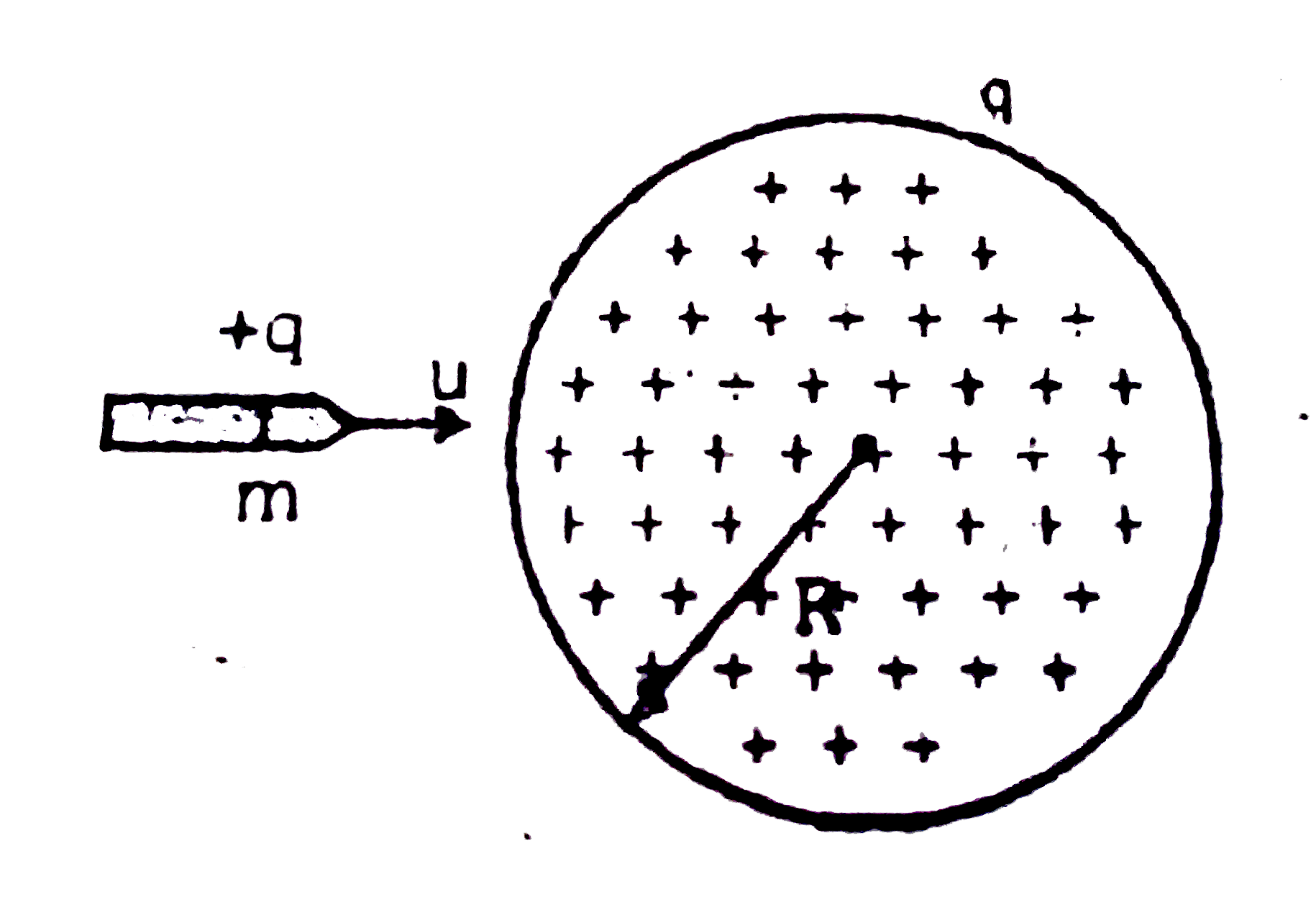 Solution in Gujrati
Solution in Gujrati
q√2πε0mR
q√4πε0mR
q√8πε0mR
√3q√4πε0mR
The correct Answer is:B
Energy at surface = Energy at centre
12mu2+Kq×qR=32KqR×q+0
∴U=q√4π∈0mR
Topper's Solved these Questions
- MISCELLANEOUSBOOK - ALLEN CHAPTER - MISCELLANEOUSEXERCISE - Exercise-03
1 Videos
- MISCELLANEOUSBOOK - ALLEN CHAPTER - MISCELLANEOUSEXERCISE - Exercise-04
1 Videos
- MISCELLANEOUSBOOK - ALLEN CHAPTER - MISCELLANEOUSEXERCISE - Exersice -05(B)
20 Videos
- KINEMATICS (MOTION ALONG A STRAIGHT LINE AND MOTION IN A PLANE)BOOK - ALLEN CHAPTER - KINEMATICS (MOTION ALONG A STRAIGHT LINE AND MOTION IN A PLANE)EXERCISE - BEGINNER S BOX-7
8 Videos
- PHYSICAL WORLD, UNITS AND DIMENSIONS & ERRORS IN MEASUREMENT BOOK - ALLEN CHAPTER - PHYSICAL WORLD, UNITS AND DIMENSIONS & ERRORS IN MEASUREMENT EXERCISE - EXERCISE-IV
7 Videos
Similar Questions
Two parallel metallic plates have surface charge densities σ1 and σ2 as shown in figure.
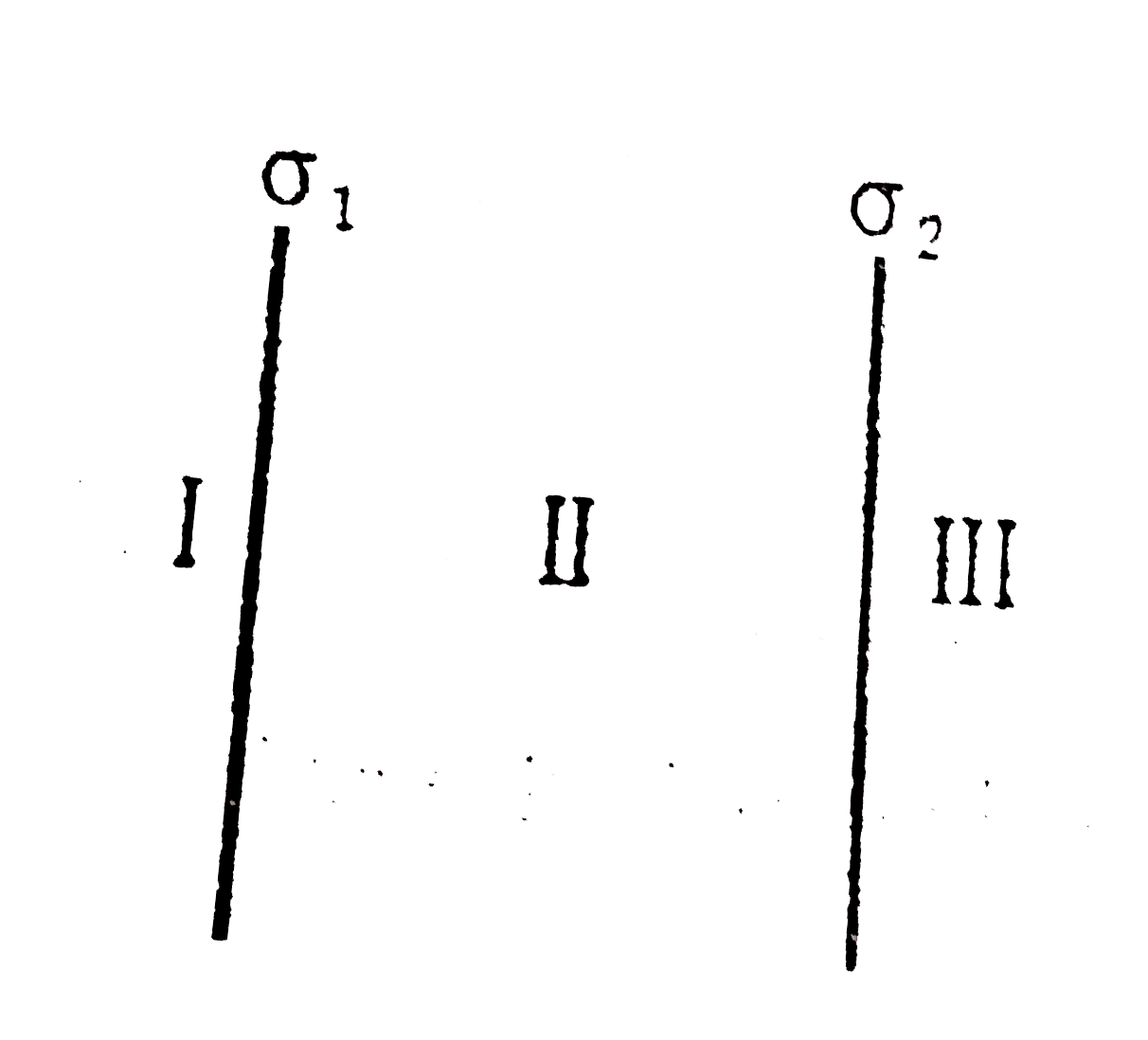
Column-IColumn-II(A)If σ1+σ2=0(p)Electric field in region III is towards right(B)Ifσ1+σ2>0(q)Electric field in region I is zero(C)If σ1+σ2<0(r)Electric field in region I is towards roght(s)Nothing can be said
View SolutionIn each situation of Column-I two elelctric dipoles having moments →p1 and →p1 of same magnitude (that is ,p1=p2) are placed on x-axis symmetrically about origin in different orientations as shown. In column-II certain inferences are drawn for these two dipoles. Then match the different orientations of dipole in column-I with the corresponding result in column-II.

View SolutionPlanck's constant has dimensions …………….
View SolutionA football player kicks a ball at an angle of 30∘ with an initial speed of 20 m/s. Assuming that the ball travels in a vertical plane, calculate (a) the time at which the ball reaches the highest point (b) the maximum height reached (c) the horizontal range of the ball (d) the time for which the ball is in the air, (g=10m/s2)
View SolutionAssertion : Gravitational forces do not depend on the medium between the masses.
Reason : Mediating particle responsible for gravitational force is graviton.
View SolutionA positive charge Q is uniformly distributed throughout the volume of a dielectric sphere of radius R. A point mass having charge +q and mass m is fired toward the center of the sphere with velocity v from a point at distance r(r>R) from the center of the sphere. Find the minimum velocity v so that it can penetrate (R/2) distance of the sphere. Neglect any resistance other than electric interaction. Charge on the small mass remains constant throughout the motion.
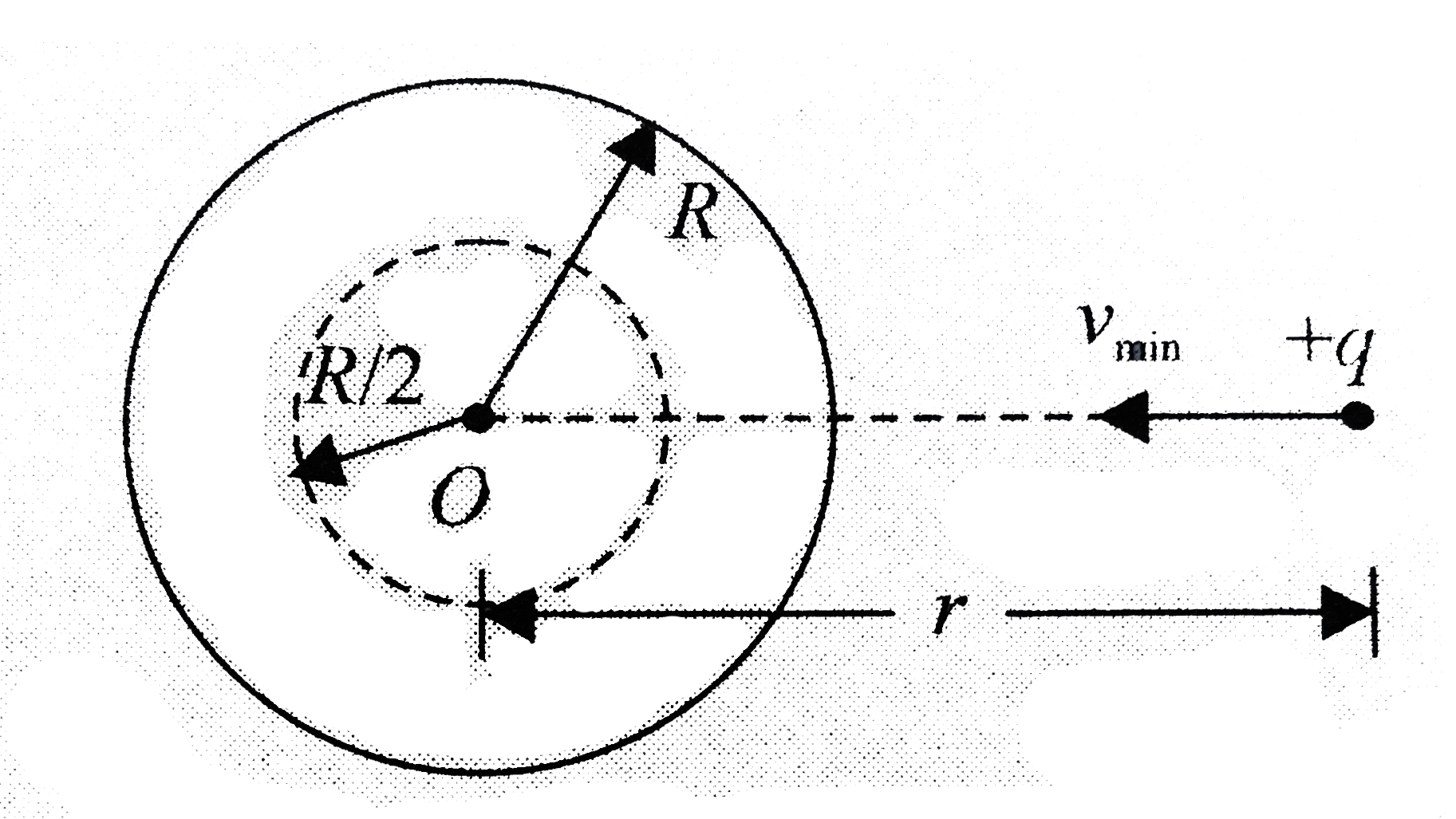
View SolutionA bullet of mass m and charge q is fired towards a solid unifromly charged sphere of redius R and total cbharge + q . If it strikes the surface of sphere with speed u , find the minimum speeed u so that it can penetrate through the sphere , (Neglect all resistance forces or friction acting on bullet except electrositatic forces ) .
View SolutionA bullet of mass m and charge q is fired towards a solid uniformly charge sphere of radius R and total charge +q. If it strikes the surface of sphere with speed u, find the minimum value of u so that it can penetrate through the sphere. (Neglect all resistance force or friction acting on bullet except electrostatic forces)

View SolutionFigure shows a uniformly charged sphere of radius R and total charge Q. A point charge q is situated outside the sphere at a distance r from centre of sphere. Find out the following :
(i) Force acting on the point charge q due to the sphere.
(ii) Force acting on the sphere due to the point charge.
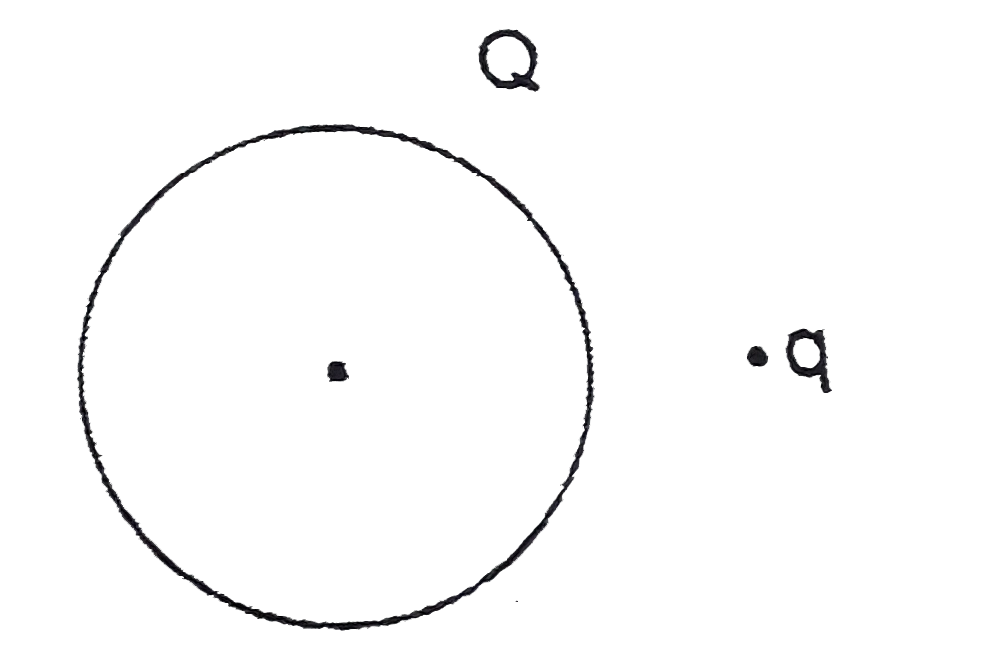
View SolutionA solid uniformly charged ficed non-conducting sphere of total charge Q and radius R contains a tunnel of negligible diameter. If a point charge '-q' of mass 'm' is released at rest from point P as shown in figure then find out its velocity at following points
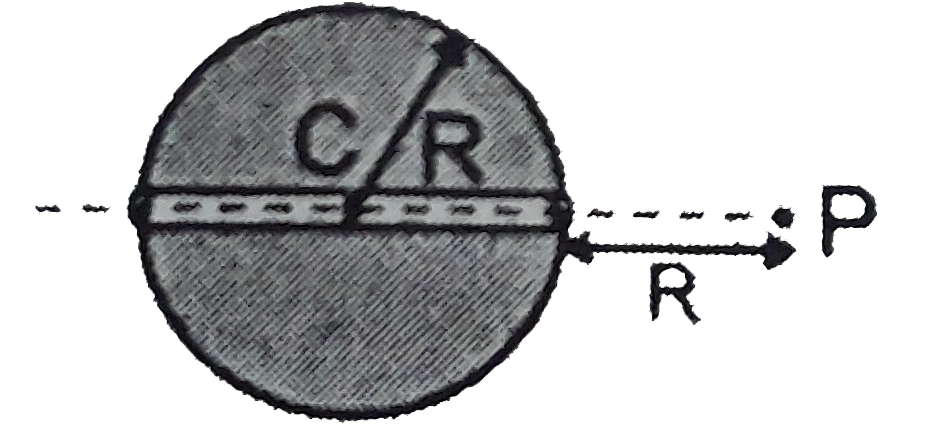
(i) At the surface of sphere
(ii) At the centre of the sphere
View Solutionदो समान गोले जिन पर आवेश + q और -q हैं, कुछ दूरी पर रखे हैं। उनके बीच बल F लगता है। यदि दोनों गोलों के बीच आवेश + q का एकसमान आवेशित गोला रखा जाए तो उस पर लगने वाले बल का मान व दिशा होगी :
View SolutionA solid sphere of mass M and radius R is pulled by a force F as shown in figure . If the sphere does not slip over the surface , then frictional force acting on the sphere is
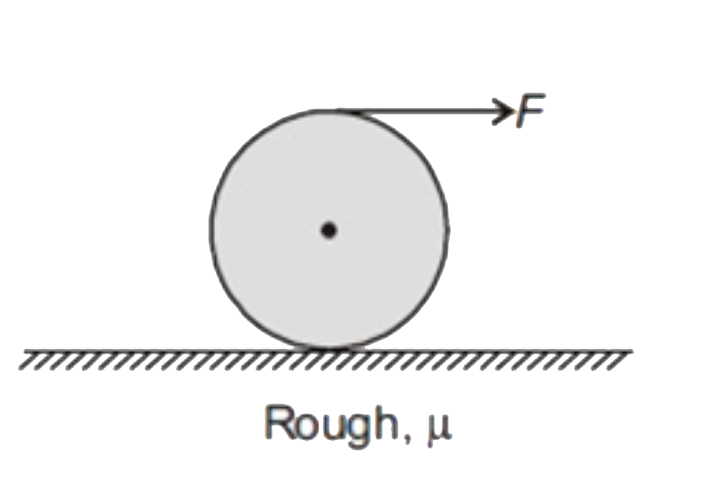
View Solutionएक समान रूप से आवेशित एक वलय एवं एक गोले दोनों की त्रिज्या R है। दोनों पर आवेश q है। गोले का केन्द्र वलय की अक्ष पर विघमान है तथा वलय के केन्द्र से R√3 दूरी पर है। गोले एवं वलय के मध्य विद्युत बल का मान ज्ञात कीजिए।
View SolutionA dielectric sphere of radius 10 cm has a charge of 3 mC distributed uniformly throughout its volume. The dielectric constant of the material of the sphere is 1. A bullet having charge 3 mc and mass 10 g is fired from the surface of the sphere along the diameter, directly towards its centre. Assuming the sphere to be fixed and neglecting any forces other than electrostatic force, the minimum velocity of the bulge so that it can emerge from the other side of the sphere is
View SolutionA uniformly charged solid sphere a mass M, radius R having charge Q is rotated about its diameter with frequency f0. The magnetic moment of the sphere is
View SolutionA bullet of mass m and q of charge is projected towards a solid sphere of uniform charge of radius R of a total charge + q. If it collides with the surface of the sphere at u speed, for what minimum value of u will it penetrate the sphere. (In addition to the electric force, all other resistive forces and the friction force on the bullet are negligible).
View Solution
